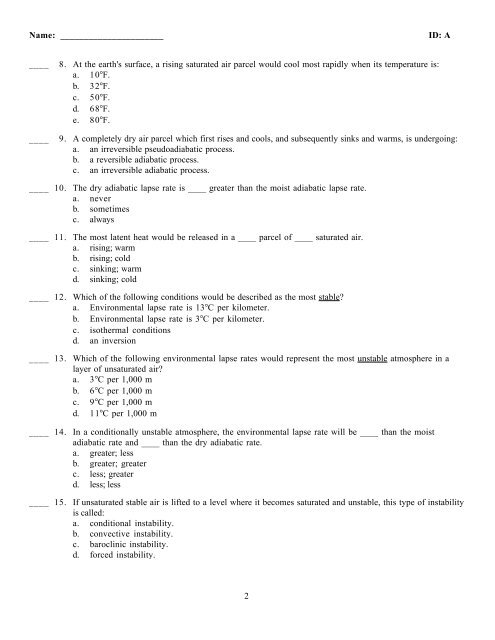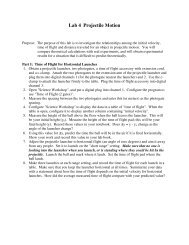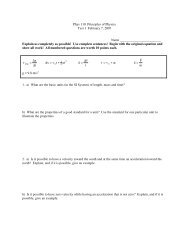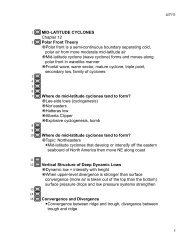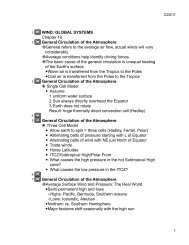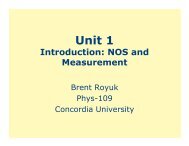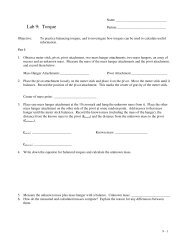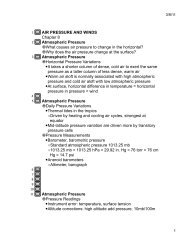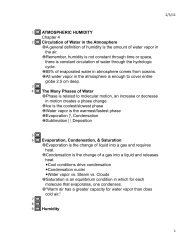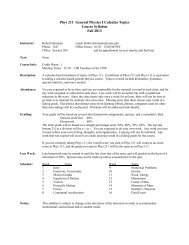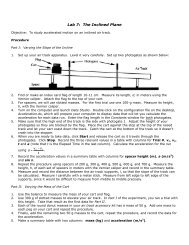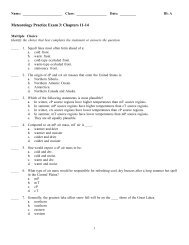Meteorology Practice Exam 2: Chapters 6-10
Meteorology Practice Exam 2: Chapters 6-10
Meteorology Practice Exam 2: Chapters 6-10
Create successful ePaper yourself
Turn your PDF publications into a flip-book with our unique Google optimized e-Paper software.
Name: ______________________ ID: A<br />
____ 8. At the earth's surface, a rising saturated air parcel would cool most rapidly when its temperature is:<br />
a. <strong>10</strong>°F.<br />
b. 32°F.<br />
c. 50°F.<br />
d. 68°F.<br />
e. 80°F.<br />
____ 9. A completely dry air parcel which first rises and cools, and subsequently sinks and warms, is undergoing:<br />
a. an irreversible pseudoadiabatic process.<br />
b. a reversible adiabatic process.<br />
c. an irreversible adiabatic process.<br />
____ <strong>10</strong>. The dry adiabatic lapse rate is ____ greater than the moist adiabatic lapse rate.<br />
a. never<br />
b. sometimes<br />
c. always<br />
____ 11. The most latent heat would be released in a ____ parcel of ____ saturated air.<br />
a. rising; warm<br />
b. rising; cold<br />
c. sinking; warm<br />
d. sinking; cold<br />
____ 12. Which of the following conditions would be described as the most stable?<br />
a. Environmental lapse rate is 13°C per kilometer.<br />
b. Environmental lapse rate is 3°C per kilometer.<br />
c. isothermal conditions<br />
d. an inversion<br />
____ 13. Which of the following environmental lapse rates would represent the most unstable atmosphere in a<br />
layer of unsaturated air?<br />
a. 3°C per 1,000 m<br />
b. 6°C per 1,000 m<br />
c. 9°C per 1,000 m<br />
d. 11°C per 1,000 m<br />
____ 14. In a conditionally unstable atmosphere, the environmental lapse rate will be ____ than the moist<br />
adiabatic rate and ____ than the dry adiabatic rate.<br />
a. greater; less<br />
b. greater; greater<br />
c. less; greater<br />
d. less; less<br />
____ 15. If unsaturated stable air is lifted to a level where it becomes saturated and unstable, this type of instability<br />
is called:<br />
a. conditional instability.<br />
b. convective instability.<br />
c. baroclinic instability.<br />
d. forced instability.<br />
2


